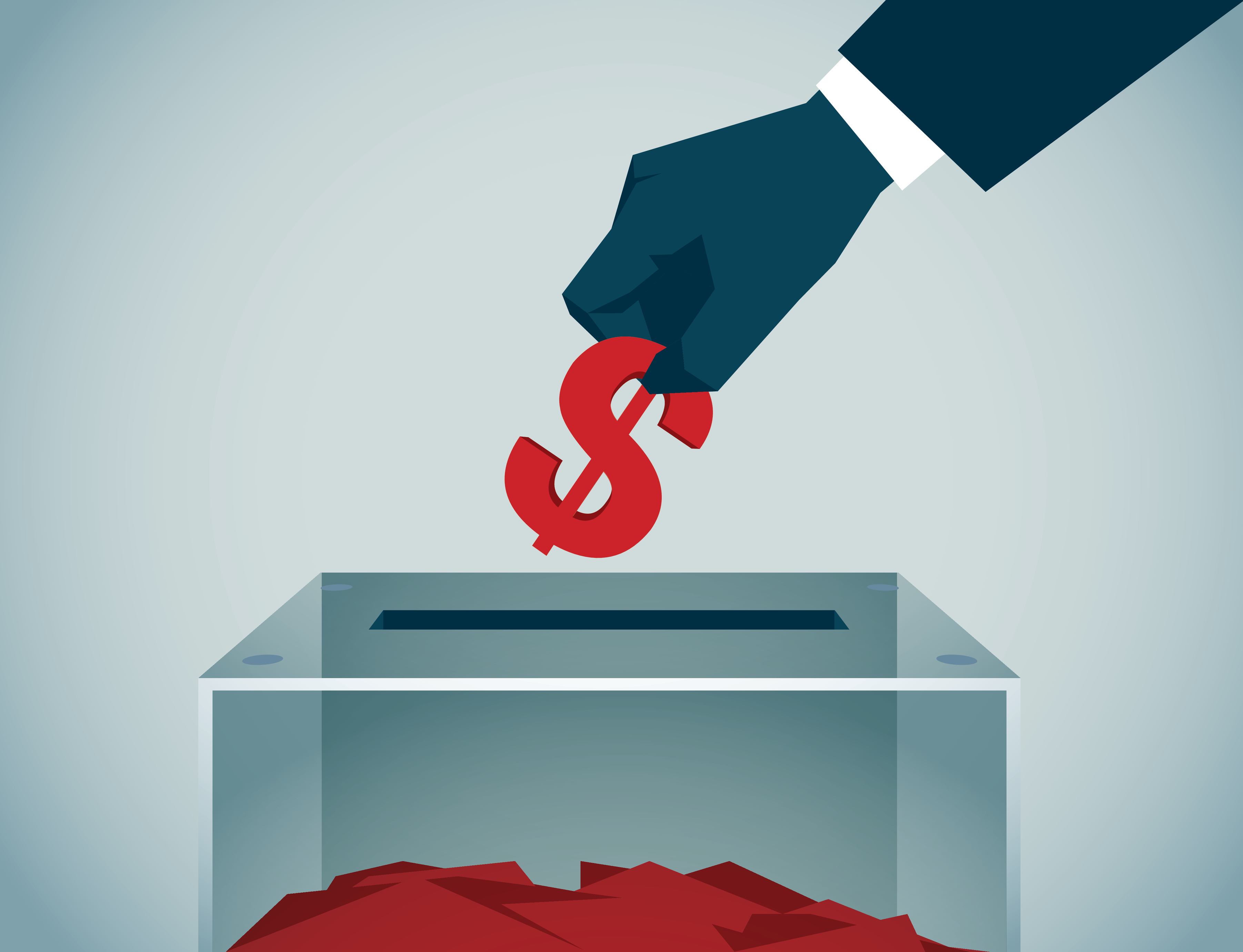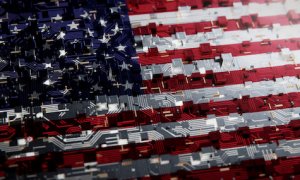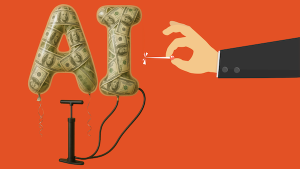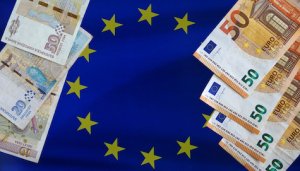New INET research shows once again that it’s large firms and the 1%—not the “median voter”—who drive U.S. policy
The idea that public opinion powers at least the broad direction of public policy in formally democratic countries like the United States has been an article of faith in both political science and public economics for generations.[1] Especially during the Cold War, direct tests of this hypothesis by social scientists were rare – indeed, questioning it was often considered un-American. But not long after the U.S. government dramatically ushered in a single-payer insurance system for banks but not the rest of the population in 2008, long-simmering doubts began to crystallize.
In 2014, Martin Gilens and Benjamin Page drew on a data set originally compiled by Gilens for an earlier study of opinion change and policy. They scrutinized more than 1,700 cases stretching across more than twenty years that tracked public opinion about proposed policy changes at various levels of income and how policy responded. Their unsettling conclusion startled many: “Not only do ordinary citizens not have uniquely substantial power over policy decisions; they have little or no independent influence on policy at all.”[2] The pair reaffirmed Gilens’ assessment in an earlier study that knowing what high-income Americans think matters a lot: If opinion shifts among those at the 90th percentile of income and above, changes in policy in the direction they want become far more likely.
In their new INET Working Paper, Shawn McGuire and Charles Delahunt look afresh at the data Gilens and Page relied upon. They reanalyzed the data set using a technique derived from research into artificial intelligence and machine learning. The method involves combing through the evidence using so-called “random forests.”[3] This approach is less encumbered with restrictive assumptions than the usual regression tools Gilens and Page and other scholars use. It is particularly helpful when data is sparse.
Their findings confirm Gilens and Page’s conclusions and likely admit of exciting extensions. We have all heard the Zen-like tease: What happens if a tree falls in the forest and no one hears it? McGuire and Delahunt’s pioneering AI application now yields a high tech twist on this hoary query: What happens when the central hypothesis in political science and public economics – that public opinion is the mainspring of public policy in countries like the United States – falls in a random forest? Will social scientists hear the message and take it to heart or not?
I fear I already know the answer. Even in our new Gilded Age, when almost every day brings new testimony about the towering significance of big money in politics, I am sure Max Planck’s theory of scientific progress will prove right once again: not till the current crop of scholars have mostly departed the field will the disciplines update.
But McGuire and Delahunt’s results are remarkable and deserve wide attention. They find that just a handful of variables suffice to explain a great deal: In contrast to so many political scientists, who linger over possibilities that the political system somehow responds to less affluent Americans in the normal course of things, McGuire and Delahunt flatly dismiss notions that anyone’s opinion about public policy outside of the top 10% of affluent Americans independently helps to explain policy. Knowing the policy area, the preferences of the top 10%, and the views of a handful of interest groups suffice to explain policy changes with impressive accuracy. Resorting to the preferences of less affluent groups actually degrades predictive accuracy, consistent with the Gilens and Page analysis.[4]
This laser-like focus on just a handful of variables helps bring into better focus the truly significant implications of these findings. As I suggested when I reviewed Gilens’ first study, the negative results are analogous to the Michelson-Morely experiment in physics.[5] That disproved the existence of the ether, which Newtonian physics was thought to require, but it did not put anything in its place.
Ever since, alas, the major positive finding of this work – that opinion above the 90th percentile of the income distribution is key for understanding policy change – has been systematically misunderstood. Social scientists play with it like a cat with a ball of yarn. They seem unable to metabolize it or build upon it. Instead, they keep repeating variations on old themes and stay fixated on opinion. If average voters are unimportant, they want to identify some precise stratum of opinion that is.[6]
Page and Gilens themselves were clear that opinion within the top 10% of the income distribution may well be a proxy for opinions of the top 1 or 2 percent. But that makes them wish more devoutly for surveys capable of sampling the very top of the income distribution: Only the timorous unwillingness of American foundations to fund hunts for that Snark has saved us from a spate of papers battling over which level of affluence – the 1%, the 1.5%, etc. – are decisive for policy and whether these levels differ across states or cities.[7]
By contrast, by the end of their study, McGuire and Delahunt look forward to turning the corner: Their conclusion voices the suspicion that the “likely lodestar variable affecting policy outcomes…is the transfer of large amounts of money to policymakers from the wealthiest sources focused intensely on particular policies.”
That is precisely the point. Surveys of opinion at the level of the 1 or 2%, especially if they are trying to explain changes in policy, do not typically reflect anything as innocently vaporous as “opinion” at all. Their data are instead noisy by-products of the mobilization of big money with its comet-like trail of social networks, subsidized op eds, subservient think tanks, and journalists seeking applause and better positions. That is how the reality of money-driven political systems shows up in surveys.
This is the crucial point that economics and political science need to absorb. Refining models of voter behavior to take more account of voter ignorance is pointless if you systematically bypass what’s driving the system, especially when money speeds across state lines at the speed of light.[8] Modern political economy has to recognize action at a distance: To understand, say, Harry Reid when he was leader of the Senate Democrats, you would be better advised to analyze his relations with Wall Street or the Chicago Mercantile Exchange than puzzling over any level of Nevada opinion, save perhaps the casinos. The judgment is not partisan: The idea that Mitch McConnell can be understood by reference mainly to even very highly remunerated opinion in his home state is preposterous. He survived as Majority Leader of the Senate in 2016 only because of his ties to super-rich Republican donors who nearly all live out of state.[9] It is high time to start framing problems in terms of money in politics, not public opinion.
McGuire and Delahunt are well aware of problems in the original Gilens and Page study, but because many readers of their study will not be, it may be worth expanding on some caution flags I raised when Gilens’ first study appeared. His list of major business lobbies excluded all of the historically most powerful ones – not only the Business Roundtable, but the Committee for Economic Development and the Business Council.[10] More broadly, though, devoting so much relative attention to interest groups is a false trail. Anyone who spends much time in archives scrutinizing real cases quickly realizes that individual firms carry most of the water in major policy battles: they foot the bills for most lobbying efforts and make most political contributions.[11] When business associations mobilize for keeps, they customarily rely on their “stars” from individual firms to help carry the ball. They also typically act alongside swarms of individual firms mounting campaigns of their own, while some large firms use associations to disguise their own presence. Gilens and Page take a stab at indexing lobbying efforts, by aggregating totals by industries, but that simply repeats the basic problem at a lower level. The political coalitions at work in these cases quite transcend business associations.[12] Individual firms and investors virtually always dominate.[13]
Some of the blame for the persistence of these tendencies obviously has to be shared by historians, who, as a group, are increasingly defaulting. Under pressure to publish rapidly, many have become far more likely to repeat old canards in the literature than to take the time to check actual archives. Not long ago, for example, I was astonished to read otherwise excellent historians repeating Herbert Hoover’s nonsense about not having talked with bankers as he prepared his famous proposal for a debt repayment moratorium in the 1931 financial crisis. I had long ago drawn attention to surviving telephone transcripts between Hoover and Thomas W. Lamont of J.P. Morgan & Co. to correct that legend, which had important implications for later events, including the 1932 presidential campaign.[14] The example of how a major banker simply telephones top political leaders during crisis is instructive, though. Exactly the same thing occurred in the 2008 financial crisis – and both cases deepen misgivings about singling out interest groups for particular emphasis. The “spectrum of political money” is much wider than interest groups or formal lobbying; all these kinds of omitted variables often play major roles in political outcomes.[15]
McGuire and Delahunt’s reassessment of the older data makes it much easier to see how far from reality ideas that average voters drive politics really are. To make progress on understanding the mainsprings of actually existing democratic systems like the United States, the fixation on public opinion has to change. McGuire and Delahunt are right that the “linear model of Congressional elections” that Jie Chen, Paul Jorgensen, and I discovered in the data is consistent with their findings and irreconcilable with median voter accounts.[16] The key point of the investment approach to political party competition in my book Golden Rule is that only political appeals that can be financed can be brought before the public. The corollary is that there is thus little reason to expect that many important issues of great concern to ordinary Americans are likely to find expression in the political system – as the battles over health care in recent years illustrates vividly. In money-driven elections and policymaking, you will have candidates, elections, real competition that is not collusion, and all kinds of noise, but when the smoke clears – and there will be lots of handsomely subsidized smoke – average (“median”) voters will not determine where policy settles. This doesn’t mean that elections do not present real choices: divisions among oligarchs can really matter. But if you want to tax the rich or pass Medicare for all, you will need a real mass movement not dependent on the goodwill of the super rich. Maguire and Delahunt’s important new paper makes it obvious that to understand how policy is hammered out, you need to analyze policy formation as a component of a much bigger system of political money.[17] Throughout the period Gilens and Page analyzed, the structural position of organized labor steadily deteriorated, while economic inequality soared.[18] This ever-more lopsided distribution of income and related institutional change has now produced a form of affluent authoritarianism. It is high time that the social sciences recognize it.
References
Aachen, Christopher and Bartels, Larry. 2017. Democracy for Realists: Why Elections Do Not Produce Responsive Government. Princeton: Princeton University Press.
Bekkouche, Yasmine and Julia Cagé, “The Price of a Vote: Evidence from France, 1993-2014,” Institute for New Economic Thinking Working Paper No. 68, https://www.ineteconomics.org/research/research-papers/the-price-of-a-vote-evidence-from-france-1993-2014
Breiman, Leo. 2001. “Statistical Modeling: The Two Cultures,” Statistical Science, Vol. 16, No. 3, 199-231.
Collins, Robert. 1981. Business Response to Keynes 1929-64. New York: Columbia University Press.
Costantini, Orsola, 2018. “Invented in America: Birth and Evolution of the Cyclically Adjusted Budget Rule, 1933-61, History of Political Economy 50 (1): 83–117.
See Elsässer, Lea, Svenja Hense, and Armin Schäfer. 2018. “Government of the People, by the Elite, for the Rich,” Unequal Responsiveness in an Unlikely Case,” Max-Planck-Institut für Gesellschaftsforschung, Köln, Discussion Paper 18/5.
Epstein, Gerald and Thomas Ferguson. 1984. “Monetary Policy, Loan Liquidation, and Industrial Conflict: The Federal Reserve and the Open Market Operations of 1932,” Journal of Economic History Vol. 44, No. 4. (December), pp. 957-983.
Ferguson, Thomas. 1984. “Normalcy to New Deal: Industrial Structure, Party Competition, and American Public Policy in the Great Depression,” International Organization, Vol. 38, No. 1 (Winter), pp. 41-94
Ferguson, Thomas. 1995. Golden Rule: The Investment Theory of Party Competition and the Logic of Money-Driven Political Systems. Chicago: University of Chicago Press.
Ferguson, Thomas. 2013. Review of Martin Gilens, Affluence and Influence: Economic Inequality and Political Power in America. Perspectives on Politics, Vol. 11, No. 1 (March 2013) 252-254.
Ferguson, Thomas. 2015. “Big Money, Mass Media, and the Polarization of Congress,” in Polarized Politics: The Impact of Divisiveness in the U.S. Political System, William Crotty ed. Boulder: Lynne Rienner Books.
Ferguson, Thomas and Joel Rogers. 1986. Right Turn: The Decline of the Democrats and the Future of American Politics. New York: Hill and Wang.
Ferguson, Thomas and Peter Temin. 2003. “Made in Germany: The German Currency Crisis of July 1931,” in Research in Economic History, Vol. 21, pp. 1-53.
Ferguson, Thomas and Voth, H-J. 2008. “Betting on Hitler: The Value of Political Connections in Nazi Germany,” Quarterly Journal of Economics, Volume 123, Issue 1, (February), pp. 101–137.
Ferguson, Thomas, Paul Jorgensen, and Jie Chen. 2019. “How Money Drives US Congressional Elections: Linear Models of Money and Outcomes, Structural Change and Economic Dynamics https://doi.org/10.1016/j.strueco.2019.09.005
Ferguson, Thomas, Paul Jorgensen, and Jie Chen. 2020. “How Much Can the U.S. Congress Resist Political Money? A Quantitative Assessment,” Institute for New Economic Thinking Working Paper No. 109, https://www.ineteconomics.org/research/research-papers/how-much-can-the-u-s-congress-resist-political-money-a-quantitative-assessment
Gilens, Martin. 2012. Affluence and Influence: Economic Inequality and Political Power in America. Princeton: Princeton University Press.
Gilens, Martin, and Benjamin I. Page. 2014. “Testing Theories of American Politics: Elites, Interest Groups, and Average Citizens.” Perspectives on Politics 12, no. 3: 564-81.
Page, Benjamin, 1978a. Choices and Echoes in Presidential Elections: Rational Man and Electoral Democracy. Chicago: University of Chicago Press.
Page, Benjamin, 1978b. “Elections and Social Choice: The State of the Evidence,” American Journal of Political Science, Vol. 21, No. 3, pp. 639-688.
Page, Benjamin, Bartels, Larry, and Seawright, Jason. 2013. “Democracy and the Policy Preferences of Wealthy Americans,” Perspectives on Politics, Vol 11, No. 1, pp. 51-73.
Page, Benjamin and Gilens, Martin. 2017. Democracy in America? What Has Gone Wrong and What We Can Do About It. Chicago: University of Chicago Press.
Page, Benjamin, 1978a. Choices and Echoes in Presidential Elections: Rational Man and Electoral Democracy. Chicago: University of Chicago Press.
Page, Benjamin, 1978b. “Elections and Social Choice: The State of the Evidence,” American Journal of Political Science, Vol. 21, No. 3, pp. 639-688.
Taylor, Lance and Özlem Ömer. 2020. Macroeconomic Inequality From Reagan to Trump: Market Power, Wage Repression, Asset Price Inflation, and Industrial Decline. New York: Cambridge University Press.
Temin, Peter. 2017. The Vanishing Middle Class: Prejudice and Power in a Dual Economy. Cambridge: MIT Press.
Tooze, Adam. 2015. The Deluge: The Great War, America and the Remaking of the Global Order, 1916-1931. New York: Penguin.
Notes
[1] This innocent sounding formulation is always freighted with more hedges than a Too Big To Fail Bank. For a long list, see e.g., Page, 1978a and 1978b.
[2] Gilens and Page, 2014, p. 572. McGuire and Delahunt research focuses on this paper; but two books of those authors are also of interest: Gilens, 2012, whence most of the actual data came; and Page and Gilens, 2017.
[3] A lucid guide is Breiman, 2001.
[4] McGuire and Delahunt: “Policy outcomes on holdout sets can be predicted with approximately 70% balanced accuracy (vs 50% chance baseline) using only a few feature categories from the Gilens dataset: rich voters’
preferences, a subset (as few as 14 out of 43) of individual IGs’ preferences, and policy area labels.”
[5] Ferguson, 2013.
[6] Much of the technical discussion is about the so-called “median voter,” who takes a position at precisely the place in public opinion where a party cannot be defeated, because it would win at least one more vote than any party assuming any other position. All this requires spelling out assumptions about issue distributions, voting rules, numbers of parties, etc., that are unnecessary to make the basic point here.
[7] Page, Bartels, and Seawright, 2013, remained a pilot study.
[8] Aachen and Bartels, 2017.
[9] Ferguson, Jorgensen, and Chen, 2019.
[10] Ferguson, 2013. For discussions about the evidence in regard to these groups, see, e.g., for the Roundtable, Ferguson and Rogers, 1986; Ferguson and Rogers, 1979. For the influence of Committee on Economic Development, see Collins, 1981, but especially Costantini, 2018. Under an unusual arrangement, I had been allowed to look at many CED files in the late seventies, but could not cite them.
[11] For evidence about actual cases drawn from archives, see, e.g., Ferguson, 1984, Epstein and Ferguson, 1984; the latter concerns Federal Reserve policy, about which few polls ever ask. I use “firms” here in the extended sense of Golden Rule, 1995, which also includes major investors. Top executives of these firms contribute alongside companies themselves. Note that American laws regulating lobbying are akin to Swiss cheese: they do not catch many forms of direct lobbying. See the discussion below on the spectrum of political money. If you simply add up lobbying and direct political contributions, the point here is also evident.
[12] “Peak associations” are sometimes said to be more important in “corporatist” political systems. Adherents of this view typically instance various European countries at different periods. I have spent large amounts of time in European as well as American archives. In both France and Germany in the inter-war period, I was surprised to find that differences with common US proceedings were less than expected, though some legal practices created minor variations. See, e.g., the way Lee, Higginson worked the French political system in the months before the 1931 financial crisis in Ferguson and Temin, 2003. Or the way German large firms behaved in the Nazi seizure of power, cf. Ferguson and Voth, 2008. That last paper findings are a reminder that event analysis indicates that that gains or losses from political events are rarely indifferently spread over the members of peak associations, not even the Stahlverein.
[13] Gilens’ treatment of some cases involving labor unions was especially problematic. They were the real force behind the resistance to cutting Social Security, not the American Association of Retired Persons, which is actually an insurance operation and in more recent times has wobbled on possible cuts. See Ferguson, 2013.
[14] Compare the discussion of the Hoover Moratorium proposal in Ferguson, 1984; reprinted in Golden Rule, with Tooze, 2015. The episode reverberated for a long time, but the outpouring of literature since the Great Financial Crisis that looks back on it has yet to draw the right lesson from the earlier episode, which is that in a true financial crisis the top of the financial community heads straight to the top of the political order.
[15] See the discussion and diagrams in Ferguson, 2015; and Ferguson, Jorgensen, and Chen, 2020. The excessive emphasis on interest groups, I think, makes Gilens and Page’s discussion of “biased pluralism” very problematic. Neither the groups nor the processes they figure in are authentically pluralistic.
[16] Especially once endogeneity is controlled; see the discussion in Ferguson, Jorgensen, and Chen, 2019.
[17] Formally and for the record, there is no implication that ideology or ideas do not matter. They are actual forces and can in principle be assessed and measured. But treating them in abstraction from the historical development of the economy and institutions just leads to empty assertions.
[18] The economic side of these developments has been analyzed by many able scholars; one that is especially clear about the interaction between politics and economics in the macrodynamics of the system is Taylor and Ömer, 2020. See also Temin, 2017, which also examines in detail the role race plays in the system and the way tax policies evolve to protect the superrich. Note that the same phenomena show in other countries, they are not unique to the United States, though I think the scale of the deformity may be. The linear model of elections shows up in France, for example. See Bekkouche and Cagé, 2018. Elsässer, Hense, and Schäfer, 2018, report findings similar to Gilens and Page’s for Germany, though I think their analysis of political finance in Germany is very incomplete.






